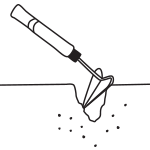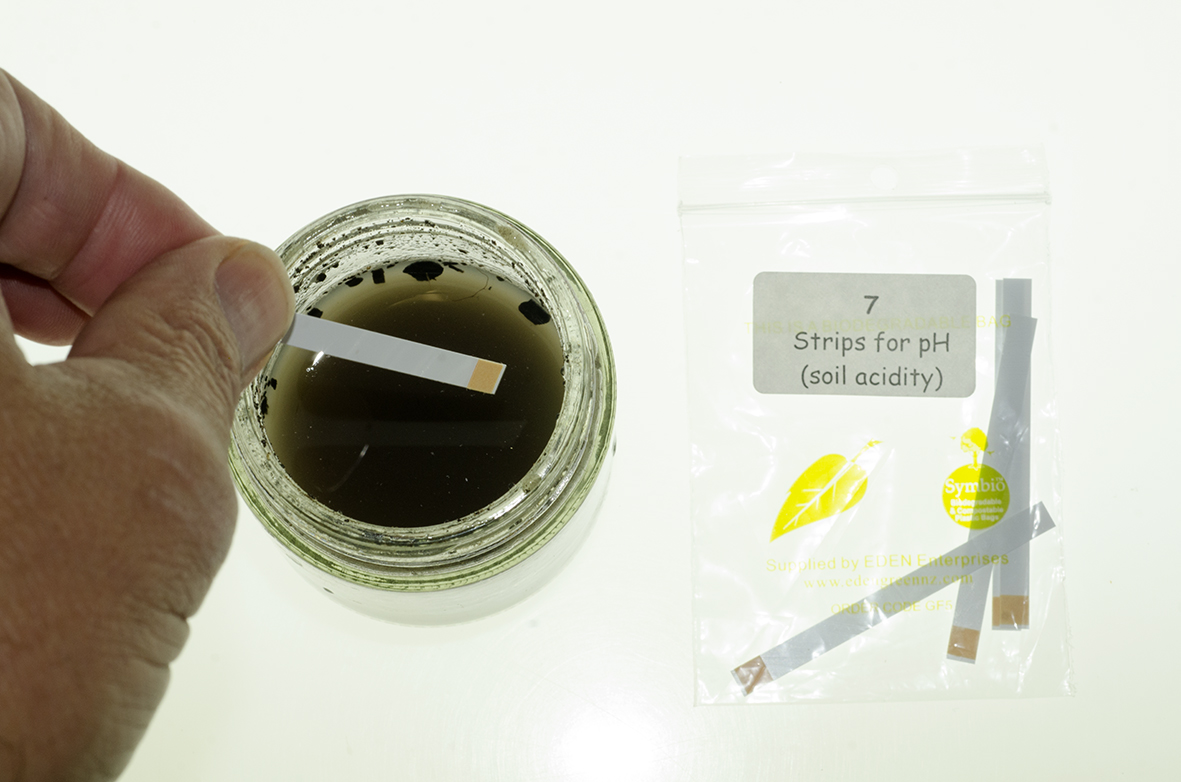Soil acidity
You probably remember this from your school chemistry classes. Using these pH indicator strips will tell you how acidic or alkaline your soil is. Most vegetables like a neutral (pH 7) or slightly alkaline soil (pH 8), although potatoes prefer some acidity (pH 6). Plants in the cabbage and pea families do like some lime added to the soil around them, so a pH of 8 or slightly higher is ideal for those groups. Remember, however, that crop rotation is (or should be) an important part of gardening and farming so it’s best to avoid planting potatoes or tomatoes after brassicas and vice versa.
Test your soil
- Take a level teaspoonful of your soil (about 5 g) and shake it well in a small jam-jar-sized container with 50 ml of tap water.
- Leave for 5 minutes to let the soil settle.
- Immerse the strip in the water for up to 2 seconds and then remove and shake off excess water.
- Compare the colour produced on the pad with the colour chart below within 40 seconds, making sure the pad does not become dry.


Project 1
If your soil appears to be a little too acidic and you are not planning to plant potatoes or tomatoes in that spot for the next 2 years, add some lime to make the soil more alkaline. If the soil is too alkaline, add some sulphate of iron crystals and water them in.
How Does Your Garden Grow Kit
This unique kit is based on research carried out in the Bio-Protection Research Centre at Lincoln University in association with the BHU Organics Trust and Kings Seeds. The kit will help you to discover a number of important things such as the acidity of your soil (slightly acid for potatoes, slightly alkaline for brassicas) and how to attract bees to your crops and ladybirds to eat your pests.
